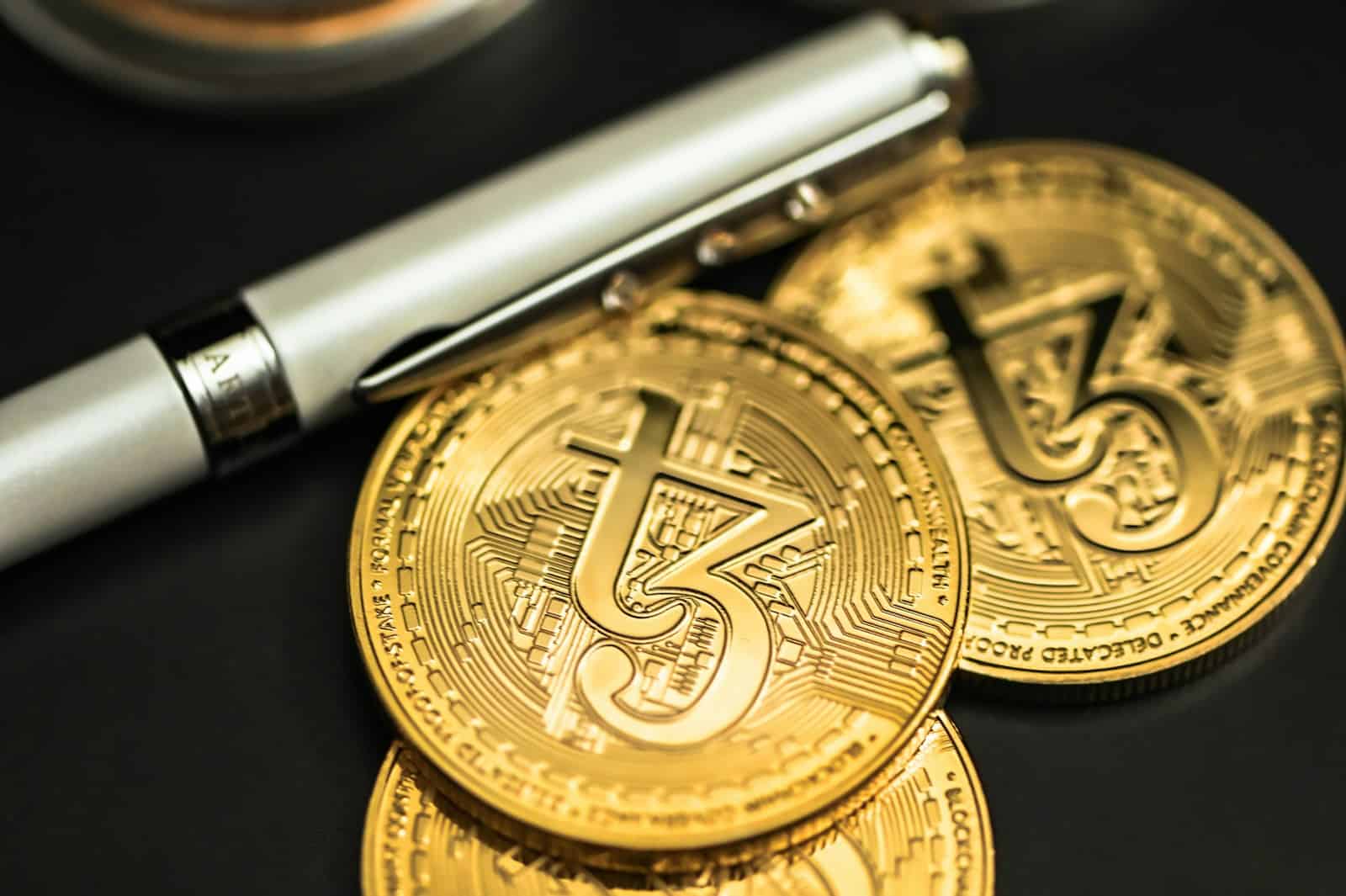Finding a good USDT wallet matters for anyone using Tether cryptocurrency. There are many options available, from mobile apps to hardware devices that keep your digital money safe.
Choosing the right wallet for your USDT can help protect your investment while making it easy to send, receive, and store your funds. Some wallets offer just basic storage, while others include features like trading, swapping between cryptocurrencies, and even earning interest. The best choice depends on what you need most – security, convenience, or extra features.
1. Trezor Hardware Wallet
Trezor is one of the most trusted names in crypto security. As a cold storage wallet, it stays completely offline, adding a solid layer of protection for your USDT and other cryptocurrencies.
The Trezor wallet keeps your private keys secure and isolated from online threats. This makes it much harder for hackers to access your funds compared to mobile or desktop wallets.
For USDT holders, Trezor offers excellent support. The device can store various cryptocurrencies including Tether (USDT) across multiple blockchain networks like Ethereum, Tron, and others.
Trezor comes in different models to fit various needs. The Trezor Safe 3 is perfect for beginners with its improved design and user-friendly interface. The more advanced models offer additional security features for experienced users.
Setting up a Trezor for USDT storage is straightforward. After the initial setup, you connect it to your computer when you need to access or manage your funds. The rest of the time, your assets remain safely offline.
The physical buttons on Trezor devices add another security layer. Any transaction requires manual confirmation by pressing these buttons, which prevents remote hackers from moving your USDT without physical access to your device.
Trezor also provides a recovery seed phrase during setup. This allows you to restore your wallet and access your USDT if your device is lost or damaged.
The Trezor Suite software makes managing USDT simple with its clean interface. Users can check balances, receive funds, and send USDT without exposing their private keys to online threats.
For people who frequently trade or use USDT, Trezor offers a good balance between security and accessibility. While not as convenient as mobile wallets for daily transactions, the security benefits are worth the minor inconvenience.
Price-wise, Trezor represents a reasonable investment for anyone holding significant amounts of USDT. The peace of mind from knowing your funds are protected from online threats justifies the cost for most users.
2. Ledger Nano X
The Ledger Nano X stands out as one of the most secure options for storing USDT. This pocket-sized hardware wallet keeps your crypto in “cold storage,” meaning your private keys stay offline and away from potential hackers.
What makes the Nano X special is its curved E Ink® touchscreen that offers an improved user experience compared to earlier models. You can easily manage your USDT directly on the device without worrying about online threats.
The device connects seamlessly with your smartphone or computer, making it convenient to check your USDT balance or make transactions while on the go. This wireless capability sets it apart from more basic hardware wallets.
Security is a top priority with the Ledger Nano X. It uses a specialized Secure Element chip along with Ledger’s own operating system to create multiple layers of protection for your USDT holdings.
The Nano X is built with durable materials to protect against physical damage. This ensures your wallet remains functional even after accidental drops or rough handling.
Battery life is another advantage of the Nano X. Unlike some other hardware wallets, you can use it for extended periods before needing to recharge.
The wallet supports multiple cryptocurrencies beyond just USDT. This makes it ideal for investors who hold various digital assets and want to keep them all secure in one place.
Setting up the Ledger Nano X is straightforward. The device walks you through the process of creating a secure wallet and backing up your recovery phrase.
For those concerned about the security of stablecoins, the Ledger Nano X offers peace of mind. Your private keys never leave the device, which significantly reduces the risk of theft.
The Ledger Nano X comes at a higher price point than some software wallets, but many users find the extra security worth the investment. After all, protecting your USDT from potential threats should be a priority.
3. Exodus Wallet
Exodus offers a user-friendly USDT wallet that works well for both beginners and experienced users. The clean interface makes managing your Tether simple without complicated menus or settings.
This wallet supports multiple versions of USDT across different blockchains. Users can choose between USDT on Ethereum, Binance Smart Chain, and Algorand networks, giving you flexibility based on your needs and transaction fee preferences.
One standout feature is the built-in exchange. This lets you swap Tether for other cryptocurrencies without leaving the app. No need to transfer funds to an exchange and back again.
Exodus works on both mobile devices and desktop computers. Your wallet syncs between platforms, so you can access your USDT wherever you are.
Security remains a priority with Exodus. The wallet gives you full control of your private keys and doesn’t store your information on their servers. This adds an important layer of protection for your funds.
The visual design makes tracking your USDT balance easy. Clear charts show your holdings and transaction history at a glance.
For those who hold various digital assets, Exodus supports many other cryptocurrencies alongside USDT. The multi-currency support means you can manage your entire portfolio in one place.
Setting up an Exodus wallet takes just minutes. The app walks you through creating a new wallet and securing it with a password and recovery phrase.
Customer support responds quickly if you have questions. Their help center also contains guides for common tasks like sending and receiving USDT.
The wallet regularly updates with new features and security improvements. These automatic updates ensure you always have the latest protections for your Tether holdings.
Exodus is free to download, though they charge small fees for the built-in exchange service. These fees are transparent and shown before confirming any swap.
4. Trust Wallet
Trust Wallet stands out as one of the most popular options for storing USDT. This free mobile wallet supports multiple blockchains, making it versatile for different types of Tether tokens.
Security is a top priority with Trust Wallet. It comes with a built-in Security Scanner that helps users identify potential threats before they become problems. The wallet also offers encrypted cloud backup to protect your funds.
Trust Wallet works well for beginners because of its simple interface. You can easily send, receive, and store your USDT without getting confused by complex features. The app is available on both iOS and Android devices.
One big advantage is that Trust Wallet supports all USDT token types. Whether you’re using USDT on Ethereum (ERC20), Tron (TRC20), or other networks, this wallet can handle it. This flexibility makes it a reliable choice for anyone who works with different blockchain networks.
The wallet gives you complete control of your private keys. This means only you can access your funds, which is important for security. Trust Wallet never stores your private keys on their servers.
Users appreciate the built-in DApp browser that lets you connect to decentralized applications. This feature makes it easy to use your USDT with various services without leaving the wallet.
Trust Wallet also includes a simple exchange feature. You can swap between different cryptocurrencies directly in the app, saving time when you need to convert your USDT to other coins.
The wallet supports millions of digital assets across over 70 blockchains, making it more than just a USDT wallet. This makes it good for people who hold various cryptocurrencies beyond Tether.
Setting up Trust Wallet is straightforward. Just download the app, create a new wallet, write down your recovery phrase, and you’re ready to receive USDT. The recovery phrase is crucial—store it somewhere safe offline.
Regular updates keep Trust Wallet secure against new threats. The development team actively maintains the wallet to ensure it remains safe for storing your digital assets.
5. Coinbase Wallet
Coinbase Wallet stands out as a user-friendly option for storing USDT. It’s a self-custody crypto wallet that puts you in complete control of your crypto assets, keys, and personal data.
The wallet is quite easy to set up, making it ideal for beginners in the crypto world. When compared to other options, Coinbase Wallet is hard to beat in terms of simplicity. You don’t need advanced technical knowledge to get started.
Security is a key feature of this wallet. Unlike exchange wallets, Coinbase Wallet gives you full ownership of your private keys. This means only you can access your funds, adding an extra layer of protection for your USDT.
The wallet supports a wide variety of cryptocurrencies beyond just USDT. This makes it convenient if you plan to diversify your crypto holdings in the future.
Coinbase Wallet connects smoothly with the main Coinbase exchange. If you already use Coinbase for buying crypto, this integration offers a seamless experience when transferring your USDT between the exchange and your wallet.
The app version works well on both iOS and Android devices. The clean interface helps users navigate through different features without confusion. You can check your USDT balance, send funds, or receive tokens with just a few taps.
For those concerned about NFTs, Coinbase Wallet also supports storing these digital collectibles. The wallet allows you to safely store both your crypto and rare NFTs in one place.
Unlike some wallets that focus only on desktop use, Coinbase Wallet offers good mobile functionality. This lets you manage your USDT on the go, which is helpful for active traders or frequent users.
The backup process is straightforward with a recovery phrase system. Make sure to write down this phrase and keep it somewhere safe, as it’s the only way to recover your funds if you lose access to your device.
6. Crypto.com Wallet
The Crypto.com Wallet is a popular option for USDT holders who want full control of their assets. It’s a non-custodial wallet, which means you—not the company—hold your private keys.
This wallet supports multiple blockchains, making it versatile for USDT storage across different networks like Ethereum, Solana, and others. You can access your funds through their mobile app available on both iOS and Android.
One standout feature is the integration with Crypto.com’s broader ecosystem. Users can easily connect to trading services and earn programs without moving their funds to separate platforms.
Security is a priority with the Crypto.com Wallet. It offers biometric authentication and encryption to keep your USDT safe from unauthorized access. The app also includes transaction monitoring to help you keep track of your activity.
The user interface is clean and straightforward. Even if you’re new to crypto, you’ll find navigating and managing your USDT holdings relatively simple.
For those concerned about privacy, the wallet doesn’t require extensive personal information to get started. This makes it a good choice for users who prefer to keep their financial activities private.
The wallet comes with built-in swap features. You can easily convert your USDT to other cryptocurrencies without leaving the app. This saves time when you need to diversify your holdings.
Customer support is available through the app if you encounter any issues. Response times are generally quick, though they can vary during busy periods.
Setting up the wallet takes just a few minutes. The app guides you through creating a new wallet or importing an existing one with clear, step-by-step instructions.
Remember to write down your recovery phrase when setting up the wallet. This is essential for regaining access if you lose your device or need to reinstall the app.
7. MyEther Wallet (MEW)
MyEther Wallet (MEW) is a popular choice for storing USDT on the Ethereum network. As an open-source platform, MEW has earned the trust of millions of users worldwide.
MEW offers a secure way to manage Tether tokens. It’s known as the first and best open source Ethereum wallet, making it a reliable option for USDT storage.
One key advantage of MEW is that it’s a self-managed wallet. You control your private keys, which gives you complete ownership of your funds. No third party can access your USDT without your permission.
The wallet supports USDT as an ERC-20 token on the Ethereum blockchain. MEW is specifically recognized as a go-to choice for managing Tether, which is pegged 1:1 to the US Dollar.
Setting up a MEW wallet is straightforward. Users can create a new wallet or access an existing one using various methods including keystore files or hardware wallets for extra security.
The interface is user-friendly despite its powerful features. Even beginners can navigate the platform with relative ease after getting familiar with the basics.
MEW also supports other stablecoins like USDC and numerous cryptocurrencies. This makes it versatile for users who want to manage different assets in one place.
The wallet comes in both web and mobile versions. The mobile app supports ETH, all ERC-20 tokens, and Ethereum-based NFTs, plus networks like Base and Polygon.
For security-conscious users, MEW can connect with hardware wallets like Ledger or Trezor. This adds an extra layer of protection for your USDT holdings.
A standout feature is that MEW doesn’t charge fees for wallet creation or management. Any fees incurred are network fees paid to Ethereum miners, not to MEW itself.
The wallet also allows users to interact directly with smart contracts. This means you can use DeFi services without leaving the MEW platform.
Remember that as a non-custodial wallet, you’re responsible for backing up your keys. If you lose access, MEW cannot recover your funds, so proper security practices are essential.
8. Omni Wallet
Omni Wallet stands as one of the original options for storing USDT. Since Tether was first launched on the Omni Layer protocol built on Bitcoin, this wallet provides native support for USDT-Omni.
The wallet offers a straightforward interface that makes managing your USDT holdings simple. Users can easily send and receive tokens while maintaining control of their private keys.
Security is a priority with Omni Wallet. It implements strong encryption standards to protect your funds from unauthorized access.
One thing to note is that USDT on the Omni network typically has higher transaction fees compared to other networks like Tron (TRC-20), which is something to consider if you make frequent transactions.
The wallet connects directly to the Bitcoin blockchain, meaning your USDT transactions are secured by Bitcoin’s robust network. This adds an extra layer of protection for your assets.
Omni Wallet supports multiple currencies beyond USDT. This makes it convenient if you want to manage different types of assets in one place.
For those concerned about custody, Omni Wallet is non-custodial. This means you maintain complete control of your funds rather than trusting a third party to hold them.
The Omni app has evolved to support more Web3 features, including staking, yield vaults, bridges, and NFT support. This makes it more versatile than just a simple USDT wallet.
For users specifically looking for Tether storage, Omni Wallet remains a reliable choice among the top Tether wallets available. However, it’s worth comparing with newer options that may offer lower fees or additional features.
When choosing between USDT wallet options, consider your specific needs. If you value the original Bitcoin-based security model, Omni Wallet might be right for you. If transaction costs are a concern, you might prefer wallets supporting other USDT versions.
Setting up an Omni Wallet is straightforward, with clear instructions provided on their website. The wallet requires standard security steps like creating a strong password and backing up your recovery phrase.
9. Coinomi Wallet
Coinomi is a popular choice for storing Tether (USDT). This wallet has been around since 2014 and has maintained a strong security record with no reported hacks during its operation.
The wallet supports the Ethereum version of USDT, which it labels as “eUSDT” to distinguish it from the Omnilayer token. This clear labeling helps users avoid confusion when managing different versions of the same stablecoin.
Coinomi offers a multi-layered security system that significantly reduces risks for USDT holders. Users maintain full control of their private keys, which never leave their devices.
What makes Coinomi stand out is its availability across multiple platforms. You can securely store, send, and receive Tether on Android, iOS, Windows, Linux, and macOS devices.
The wallet supports over 1,770 cryptocurrency assets beyond just Tether. This makes it a good option for users who want to manage various cryptocurrencies in one place.
Coinomi charges no fees for its basic services. This is a major advantage for USDT users who want to avoid extra costs when managing their stablecoins.
The interface is designed to work well for both beginners and experienced crypto users. Navigation is straightforward, with essential functions easy to find and use.
For users needing help, Coinomi provides 24/7 customer support. This constant availability can be crucial when facing urgent issues with your USDT holdings.
Another benefit is that Coinomi doesn’t require KYC (Know Your Customer) verification. Users worried about privacy will appreciate this feature as it allows them to manage their Tether without sharing personal information.
Coinomi’s multi-layered security architecture includes features like seed phrase backups and strong encryption. These security measures help protect users’ USDT from potential threats.
The wallet also offers built-in exchange functionality. This allows users to swap USDT for other cryptocurrencies without leaving the app, adding convenience for active traders.
10. Binance Wallet
Binance Wallet is a versatile option for storing USDT. It’s directly connected to the Binance exchange, making transfers between your wallet and trading accounts quick and easy.
This wallet supports multiple blockchains, which gives you flexibility when sending or receiving USDT. You can choose between different networks like TRC20, ERC20, and others depending on your fee preferences.
Security is a priority with Binance Wallet. It’s designed as a semi-custodial wallet that’s keyless and seedless, which means you don’t have to worry about managing private keys or seed phrases.
The wallet integrates smoothly with Binance’s ecosystem. This connection makes it simple to access other Binance services without jumping between different platforms.
For mobile users, the experience is straightforward. The app interface is clean and user-friendly, making it accessible even if you’re new to crypto wallets.
Binance Wallet supports a wide range of digital assets beyond just USDT. This makes it convenient if you plan to diversify your crypto holdings in the future.
Transaction fees vary depending on which blockchain network you choose for your USDT. The TRC20 network typically offers lower fees compared to ERC20.
Setting up a Binance Wallet is quick if you already have a Binance account. New users will need to complete the standard verification process before getting started.
The wallet includes DeFi features for users interested in more advanced crypto activities. This adds value beyond just storing USDT.
For those concerned about customer support, Binance offers multiple channels for assistance. This can be reassuring when dealing with any wallet issues.
The wallet receives regular updates and security improvements. This ongoing development helps keep your USDT safer from emerging threats.
One notable advantage is the easy access to the Binance exchange, which makes converting USDT to other cryptocurrencies straightforward when needed.
Understanding USDT Wallets
USDT wallets provide secure storage for Tether tokens across multiple blockchain networks. They offer various security features and accessibility options to match different user needs.
What Is USDT?
USDT (Tether) is a popular stablecoin cryptocurrency that maintains a value pegged to the US dollar. Unlike volatile cryptocurrencies like Bitcoin, USDT aims to hold a consistent 1:1 ratio with the USD, making it useful for trading and storing value.
Tether tokens exist on several blockchains including:
- Ethereum (ERC-20)
- Tron (TRC-20)
- Solana
- Algorand
- Omni Layer
This multi-chain availability gives users flexibility when choosing where to store and transfer their USDT. Each blockchain offers different transaction speeds and fees.
The stability of USDT makes it popular for traders who want to exit volatile positions without converting back to fiat currency. It’s also widely used for international transfers since it avoids traditional banking delays and fees.
How USDT Wallets Work
USDT wallets are digital tools that store the private keys needed to access and manage your Tether tokens. These wallets don’t actually contain your tokens – they provide an interface to interact with them on the blockchain.
There are several types of USDT wallets:
Hardware wallets: Physical devices like Ledger or Trezor that store private keys offline for maximum security. These are ideal for large holdings.
Software wallets: Applications on computers or smartphones that offer a balance of security and convenience. Examples include Trust Wallet and Exodus Wallet.
Exchange wallets: Custodial solutions where the exchange holds your private keys. They’re convenient but give you less control.
When choosing a wallet, consider which blockchain you’ll use for your USDT. Not all wallets support every blockchain where USDT exists. The best wallets provide multi-factor authentication and backup options.
Security Features to Look for in a USDT Wallet
Protecting your Tether (USDT) requires specific security measures that can make or break your crypto experience. When choosing a wallet, certain security features stand out as essential for keeping your digital assets safe.
Two-Factor Authentication
Two-factor authentication (2FA) adds a crucial second layer of security to your USDT wallet. This feature requires you to verify your identity twice before accessing your funds.
Most secure USDT wallets offer multiple 2FA options:
- Authentication apps (Google Authenticator, Authy)
- SMS verification codes
- Email verification
- Biometric verification (fingerprint or facial recognition)
When you set up 2FA, even if someone discovers your password, they still can’t access your wallet without the second verification method. This simple feature significantly reduces the risk of unauthorized access to your funds.
Many top wallets now offer customizable 2FA settings. You can require 2FA for all transactions or just those above certain amounts. This balances security with convenience for your daily needs.
Cold Storage Options
Cold storage keeps your USDT offline, away from internet-based threats. This approach creates a physical barrier between hackers and your assets.
Popular cold storage options include:
- Hardware wallets: Physical devices like Ledger or Trezor that store private keys offline
- Paper wallets: Physical documents containing your keys and QR codes
- Air-gapped computers: Computers that have never connected to the internet
Hardware wallets are particularly effective because they require physical confirmation of transactions. This means malware can’t authorize transfers without you physically pressing buttons on the device.
Many users adopt a hybrid approach, keeping small amounts in “hot” online wallets for daily use while securing larger holdings in cold storage. This strategy combines convenience with robust protection for major investments.
Integrating USDT Wallets with Other Platforms
Connecting your USDT wallet to different platforms can make your crypto experience more seamless and useful. Integration options have expanded significantly in recent years, offering more ways to use your Tether funds.
Crypto Exchanges
Most top USDT wallets offer direct connections to popular exchanges. This integration allows users to quickly move their USDT between storage and trading platforms without complicated steps.
Binance wallet stands out for its native exchange integration. Users can swap between USDT and other cryptocurrencies without leaving the wallet interface. This saves time and often reduces fees.
Trust Wallet also excels at exchange connections. It includes a DEX (decentralized exchange) feature that lets users trade USDT directly from their wallet. No need to transfer funds elsewhere.
When linking wallets to exchanges, use these best practices:
- Enable two-factor authentication on both platforms
- Use unique, strong passwords for each connection
- Verify transaction details before confirming
- Start with small test transfers
Merchant Services
Many USDT wallets now connect with payment processors and merchant services. This makes spending Tether at online and physical stores much easier.
BitPay wallet offers excellent merchant integration. Users can pay for goods and services at thousands of businesses that accept cryptocurrency payments. The wallet handles conversion rates automatically.
Some wallets now include USDT-linked debit cards. These cards let users spend their Tether balance anywhere that accepts traditional cards. The conversion happens instantly at point of sale.
For business owners, wallets like Coinbase provide tools to accept USDT payments from customers. The integration works with existing payment systems and can automatically convert USDT to fiat currencies if needed.
When using merchant services, watch transaction fees. Some services charge extra for crypto-to-fiat conversions during purchases.
Frequently Asked Questions
Many USDT wallet users have common questions about security, usability, and blockchain compatibility. Here are answers to the most frequently asked questions to help you choose the right wallet for your needs.
What are the most recommended USDT wallets according to the community on Reddit?
Reddit users consistently recommend Ledger Nano X for maximum security. Many users praise its offline storage capabilities and robust security features.
Trust Wallet also gets frequent mentions for its easy mobile interface. The community appreciates its balance of security and convenience.
For desktop users, Exodus Wallet receives positive feedback for its user-friendly design and multi-currency support.
Which wallets offer the best support for USDT TRC20 tokens?
Trust Wallet provides excellent support for USDT on the TRC20 network. It handles transactions quickly with minimal fees.
Tron-based USDT (TRC20) works best with native Tron wallets. These process transactions faster and with lower fees than ERC20 alternatives.
Exodus and Coinbase Wallet both support TRC20 tokens with straightforward interfaces for sending and receiving.
Which mobile app is considered the most user-friendly for storing USDT?
Trust Wallet stands out for its clean, intuitive interface. Even beginners can navigate it easily to manage their USDT.
Coinbase Wallet offers a simple design with helpful features for newcomers. The app includes clear transaction histories and easy backup options.
Exodus mobile also ranks highly for user experience. Its visual design and smooth operation make USDT management straightforward.
How can I create a new wallet specifically for holding USDT?
Download a reputable wallet app like Trust Wallet or Coinbase Wallet from your app store. Complete the setup process and create a new wallet.
Write down your recovery phrase in a safe, offline location. This is critical for wallet recovery if you lose access.
After setup, find USDT in the supported tokens list and make sure you select the right network (TRC20, ERC20, etc.) before receiving any funds.
What should I consider when choosing a wallet for my USDT to ensure maximum security?
Hardware wallets like Trezor and Ledger provide the highest security by keeping your private keys offline. They’re worth the investment for larger USDT holdings.
Enable all available security features including PIN codes, passwords, and biometric authentication when possible.
Consider the company’s reputation and history of security incidents. Research whether the wallet has undergone security audits by trusted third parties.
Are there any significant differences between USDT wallets on various blockchains?
Transaction fees vary significantly between networks. TRC20 (Tron) typically offers the lowest fees and fastest transactions for USDT compared to ERC20 (Ethereum).
Network congestion affects usability. Ethereum-based USDT can become expensive to transfer during high-traffic periods.
Recovery processes might differ between wallets on different chains. Some wallets support multiple blockchain versions of USDT, while others are more limited.







